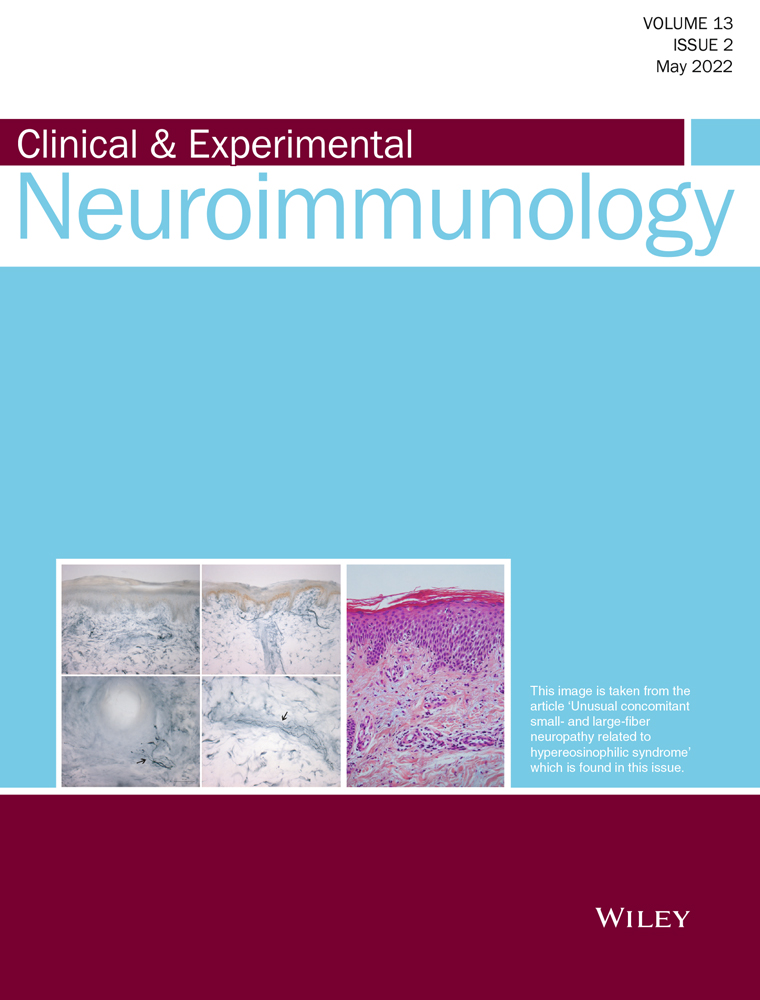Unusual concomitant small- and large-fiber neuropathy related to hypereosinophilic syndrome
Elena Merico and Alessandra Govoni contributed equally to this work.
Abstract
Background
Small-fiber neuropathy is a disorder clinically dominated by neuropathic pain and autonomic symptoms. In >50% of patients, no etiology can be identified. and some evidence suggests a possible role of the immune system. Among the most common manifestations of hypereosinophilic syndrome, neurological lesions have been described in the central and peripheral nervous systems. No correlation between idiopathic hypereosinophilia with systemic involvement and small-fiber neuropathy has been described before.
Case presentation
We present the case of a 21-year-old woman with large- and small-fiber neuropathy associated with systemic idiopathic hypereosinophilic syndrome. The patient manifested a subacute itchy rash to the limbs and trunk with painless lymphadenopathy of the neck and groin, persistent lack of appetite, vomiting, and subsequent painful dysesthesia on the feet. At blood test, eosinophilic leukocytosis was detected, electrophysiological studies showed axonal sensory neuropathy on the sural nerve bilaterally, cerebrospinal fluid analysis showed a cytological–albumin dissociation, and skin biopsy was decisive in confirming a severe picture of the small fibers pathology and lymphocytic infiltrates with eosinophils in the dermis. The in-depth diagnostic investigations excluded other significant alterations and pathologies. After steroid and immunoglobulin therapies, the patient progressively improved with resolution of the rash and vomiting episodes, resuming regular nutrition and obtaining important reduction of painful dysesthesia.
Conclusions
In the present case, we hypothesized that idiopathic hypereosinophilic syndrome was the likely cause of the atopic dermatitis and small-fiber neuropathy, consistent with pain and dysautonomic symptoms.
DISCLOSURES
The authors declare no conflict of interest.




